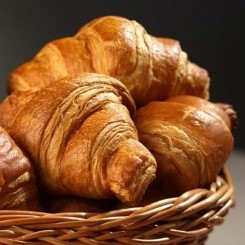Fancy nipping down the pub for a quick pint and maybe grab a latte and a croissant?
When I was in my teenage years, pubs in England were a very distinctive place; dark, smoky, slightly smelly, overwhelmingly male and mostly shut.
A legacy of previous societal norms meant that women rarely went into pubs unless they were with men.
A legacy of World War One legislation meant that drinks could not be served after 10.30pm or 11pm. This generally meant a few hours of seriously intensive binging from about 8pm to 11pm, mostly on two nights per week.

This state of affairs was not great for earning a commercial return. Pubs often occupy prime sites at expensive rental. Trying to recover the operating costs of a business when the assets are only utilised for 10% of the time is a challenge and a half.
The first marketing innovation was to make pubs far more female friendly.
Curtains over windows were abolished in favour of plate glass windows. Pubs started to sell a choice of wines. The smoking ban came in.
Women were far now more likely to go to a bar with friends because the environment seemed less intimidating. Unsurprisingly, where groups of young women went, groups of young men followed.
Doctors worried about the effects of all this on the nation’s health, but the tills kept ringing.
Laws governing opening hours were relaxed a few years ago, with some predictable, but probably transitional, issues of overindulgence, as a nation used to nanny closing the bar at 11pm now continued to serve, as people continued to drink at the, erm, efficient rate the previous law had dictated.
JD Wetherspoon runs a chain of bars in the UK, mostly in sites that previously were not bars. Car showrooms are a particular favourite choice of location because of the big windows that attract passing impulse customers.
They have started to open their city centre bars early in the morning, in an attempt to attract an extra crowd.
Some chains have slightly different staff uniforms in daytime and the evening; pseudo-Parisian coffee bar by day; unfussy drinking den by night.
The result is that JD Wetherspoon claims to sell 400,000 breakfasts per week (only McDonalds are bigger, with 600,000).
A recessionary environment means that customers have become open to the idea of hanging out in Wetherspoons with a cheap latte instead of a more expensive option in Starbucks. It has achieved this growth remarkably quickly, as it only started to open for breakfast last year.
It’s a wonderful example of innovative business change, asset utilisation and absorption costing.







